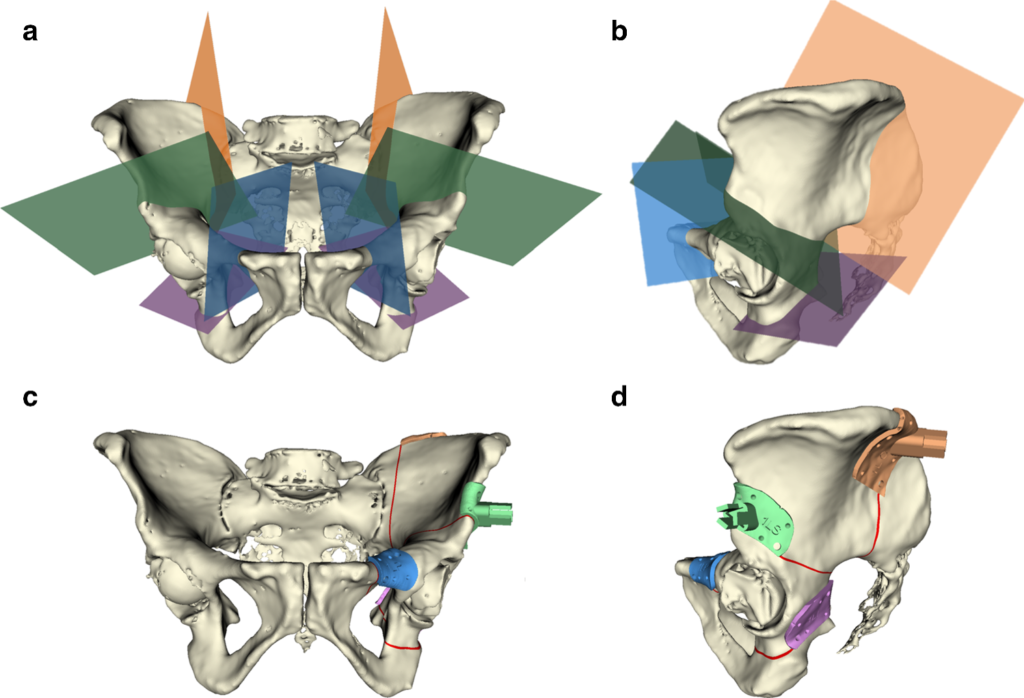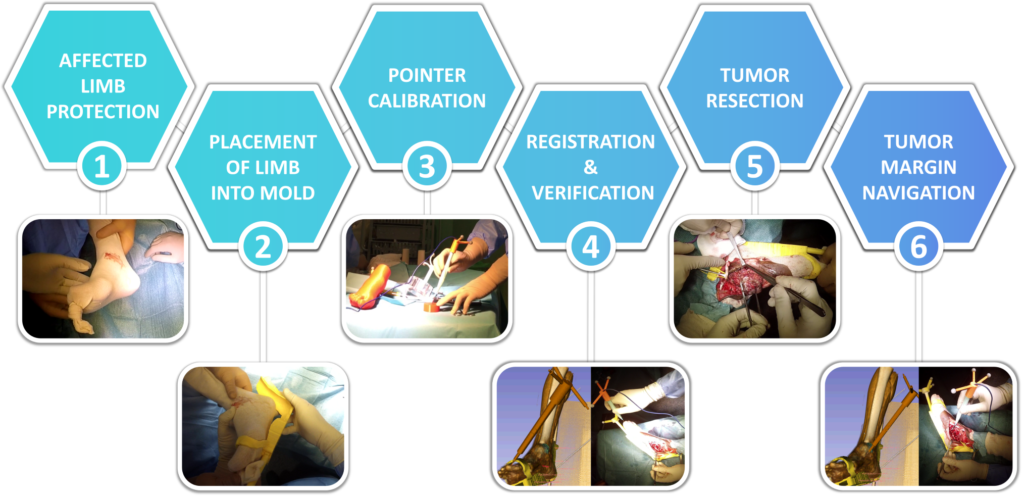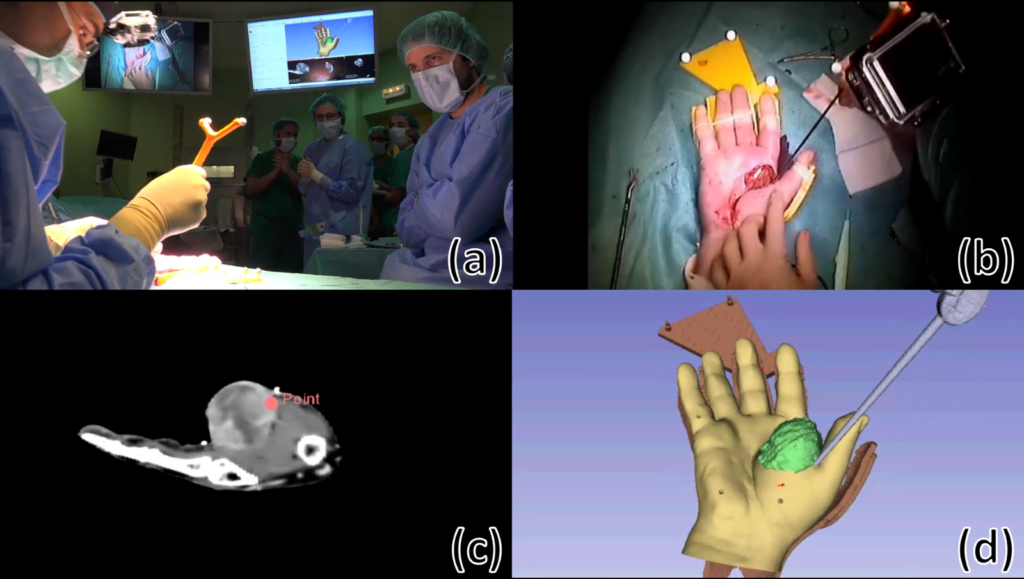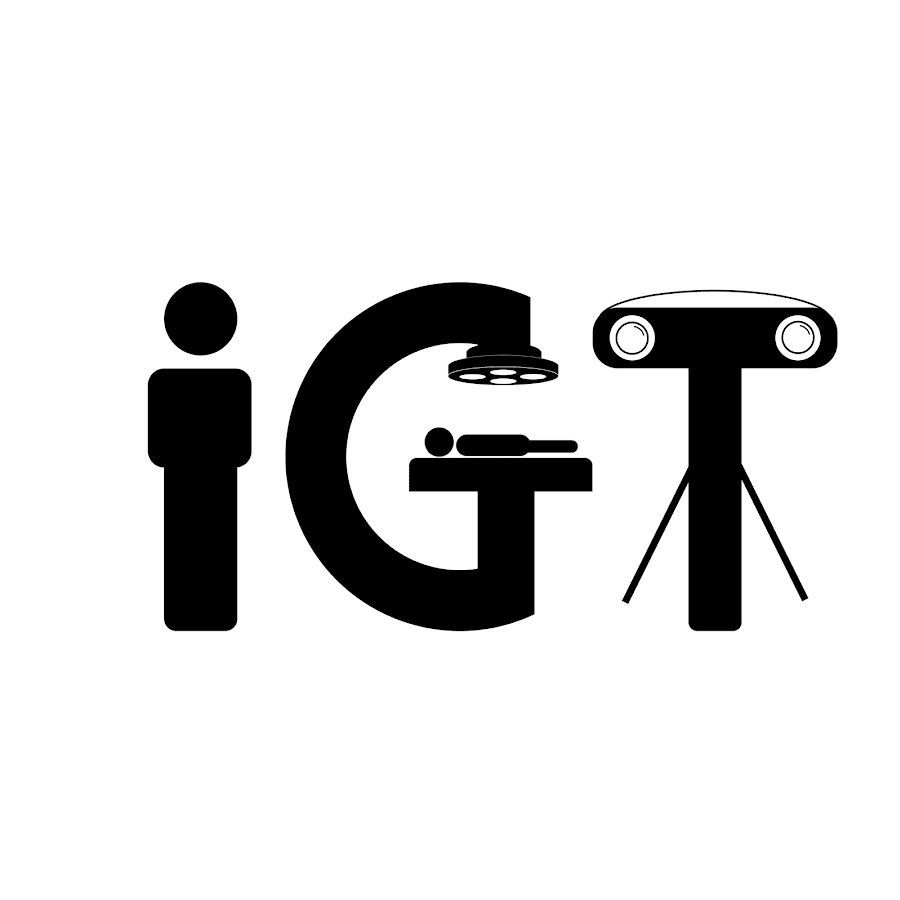In orthopedic surgery, the resection of tumors requires high accuracy in order to ensure tumor-free margins, avoiding local recurrence and potentially improving reconstruction and patient function. The use of navigation systems and .3D-printing has effectively increased surgical precision in these scenarios.
Researchers of our group have worked in collaboration with orthopedic surgeons at Hospital General Universitario Gregorio Marañón (Madrid, Spain) to improve the surgical accuracy in the resection of tumors in the pelvis and limbs. New workflows have been proposed including the use of surgical navigation, augmented reality and .3D printing to achieve precise resections with non-invasive surgical approaches.
Patient-specific instruments
The correct placement of 3D-printed patient-specific instruments (PSI) is critical to improve accuracy in pelvic tumor resections, which can be challenging in some regions due to the morphology of the bone.
We have proposed a method to efficiently characterize the accuracy of patient-specific instruments placement for four common pelvic osteotomies.

- M. García-Sevilla, L. Mediavilla-Santos, M.T. Ruiz-Alba, R. Pérez-Mañanes, J. A. Calvo-Haro and J. Pascau. Patient-specific desktop 3D-printed guides for pelvic tumour resection surgery: a precision study on cadavers. Int J CARS 16, 397–406 (2021). [doi]
Surgical Navigation in Acral tumors
Nowadays, surgical navigation techniques have shown potential benefits in orthopedic oncologic surgery thanks to the development of commercial navigation systems that have been designed for specific procedures. However, the lack of flexibility to adapt the system to the requirements of every case, and the high cost of these devices have no clear benefit to very particular procedures such as the resection of acral tumors, those located in distal extremities such as hands or feet.

This study proposes a surgical workflow that combines open-source navigation software with desktop 3D printing for accurate navigation of these tumors. We used 3D printing technology to create a patient-specific mold that maintained the same position as the distal extremity during image-guided surgery as in the preoperative images. We developed an intraoperative navigation software based on a multi-camera tracking system in 3D Slicer to guide physicians during the intervention.

- R. Moreta-Martinez, J. A. Calvo-Haro, R. Pérez-Mañanes, M. García-Sevilla, L. Mediavilla-Santos, and J. Pascau. Desktop 3D Printing: Key for Surgical Navigation in Acral Tumors? Appl. Sci., 10(24), 8984 (2020). [doi] [pdf, Open Access under the Creative Commons Attribution 4.0 International License]
Knee Joint Goniometry
Joint goniometry is an essential tool for clinical assessment in many disciplines. Measurement of joint angle can be used to determine the presence or absence of dysfunction, to quantify treatment effectiveness or to guide treatment interventions.
Although many different technologies have been proposed for angle measurement, universal goniometers (UG) are the tool most commonly found in clinical practice. They are cheap, easy to use, easily accessible and portable. Several studies have reported a good intra- and inter-tester reliability of UG, but reliability varies according to the joint and range of motion being measured. The main disadvantage of UG is that an incorrect positioning of the device with respect to bony landmarks and center of rotation of the joint can affect reliability and validity. Some studies report an accuracy in UG angle measurements of 4°, while others found errors of up to 10°.
We developed a new system for knee joint goniometry based on two low-cost inertial sensors and open-source software. This system was validated on a cadaveric study demonstrating high accuracy for the estimation of the flexion-extension and tibial rotation angles.
- E. León-Román, D. García-Mato, I. López-Torres, J. Vaquero-Martín, J.A. Calvo-Haro, J. Pascau, P. Sanz-Ruiz. The Knee Prosthesis Constraint Dilemma: Biomechanical Comparison Between Varus‐Valgus Constrained Implants and Rotating Hinge Prosthesis. A Cadaver Study. Journal of Orthopaedic Research. 1-7 (2020) [doi]
Related publications
- M. García-Sevilla, L. Mediavilla-Santos, M.T. Ruiz-Alba, R. Pérez-Mañanes, J. A. Calvo-Haro and J. Pascau. Patient-specific desktop 3D-printed guides for pelvic tumour resection surgery: a precision study on cadavers. Int J CARS 16, 397–406 (2021). [doi]
- R. Moreta-Martinez, J. A. Calvo-Haro, R. Pérez-Mañanes, M. García-Sevilla, L. Mediavilla-Santos, and J. Pascau. Desktop 3D Printing: Key for Surgical Navigation in Acral Tumors? Appl. Sci., 10(24), 8984 (2020). [doi] [pdf, Open Access under the Creative Commons Attribution 4.0 International License]
- E. León-Román, D. García-Mato, I. López-Torres, J. Vaquero-Martín, J.A. Calvo-Haro, J. Pascau, P. Sanz-Ruiz. The Knee Prosthesis Constraint Dilemma: Biomechanical Comparison Between Varus‐Valgus Constrained Implants and Rotating Hinge Prosthesis. A Cadaver Study. Journal of Orthopaedic Research. 1-7 (2020) [doi]
